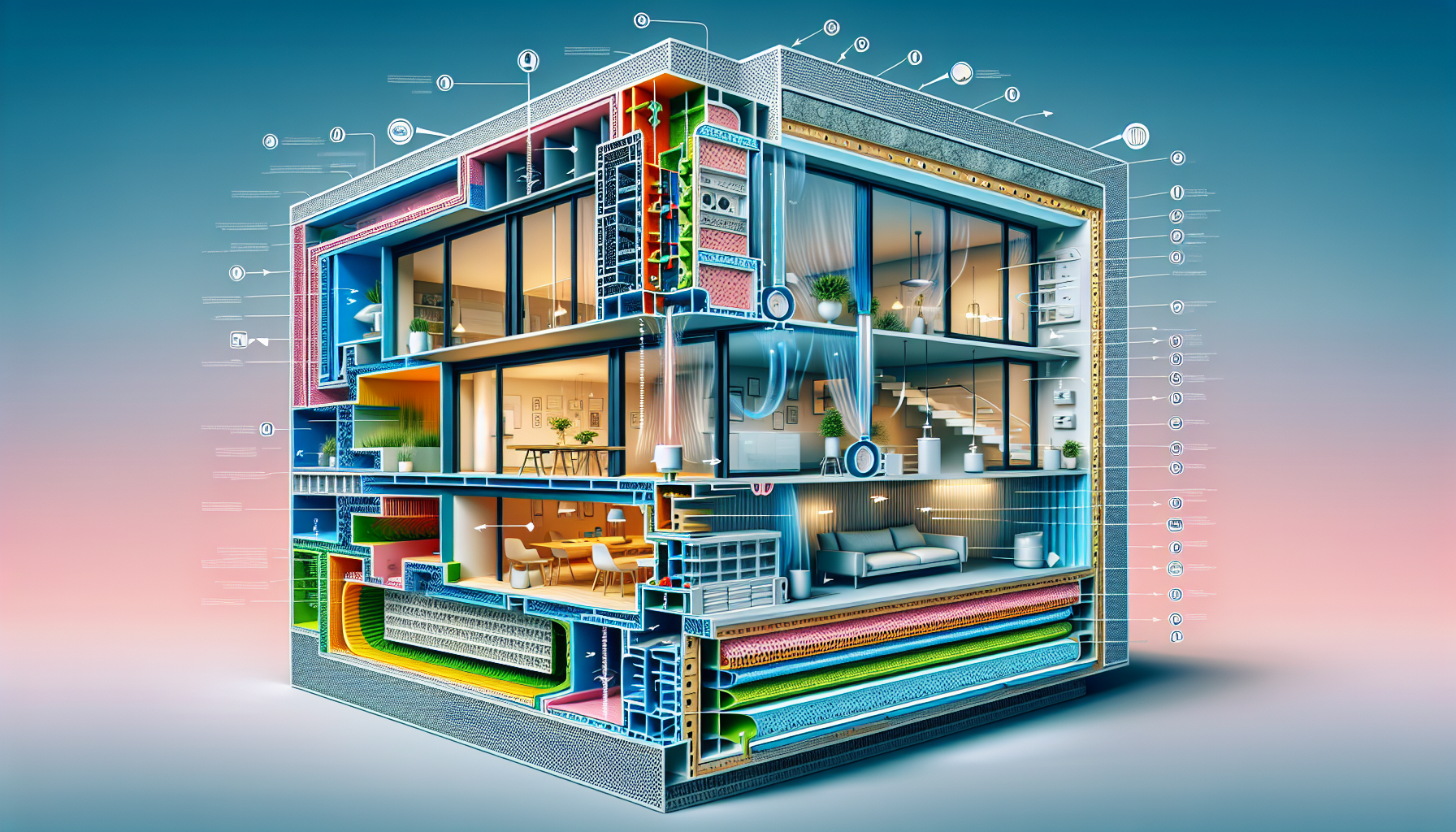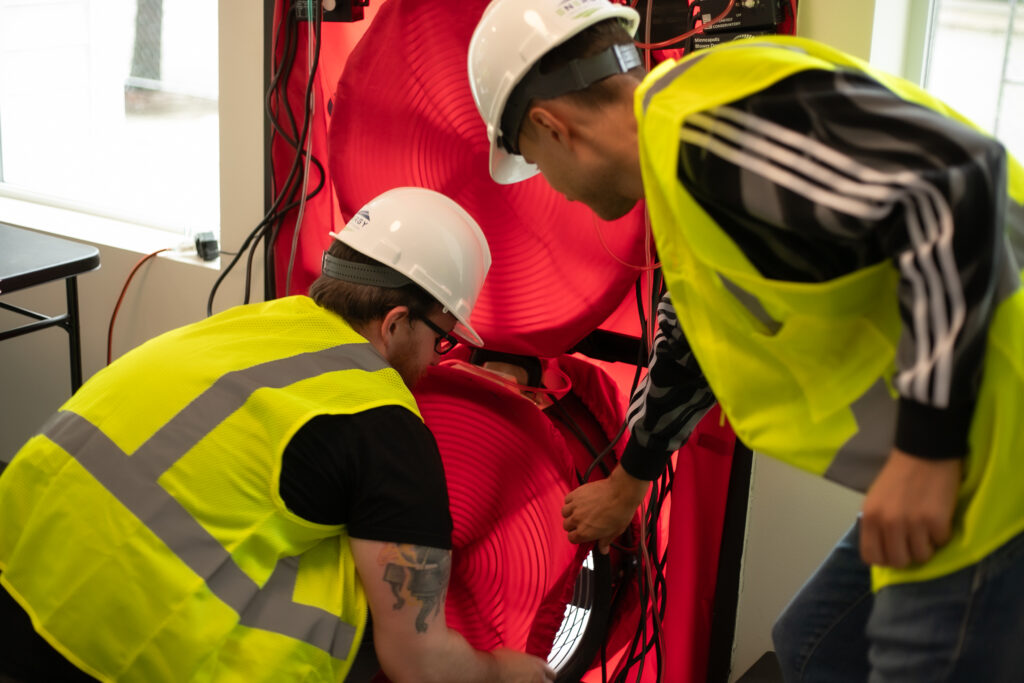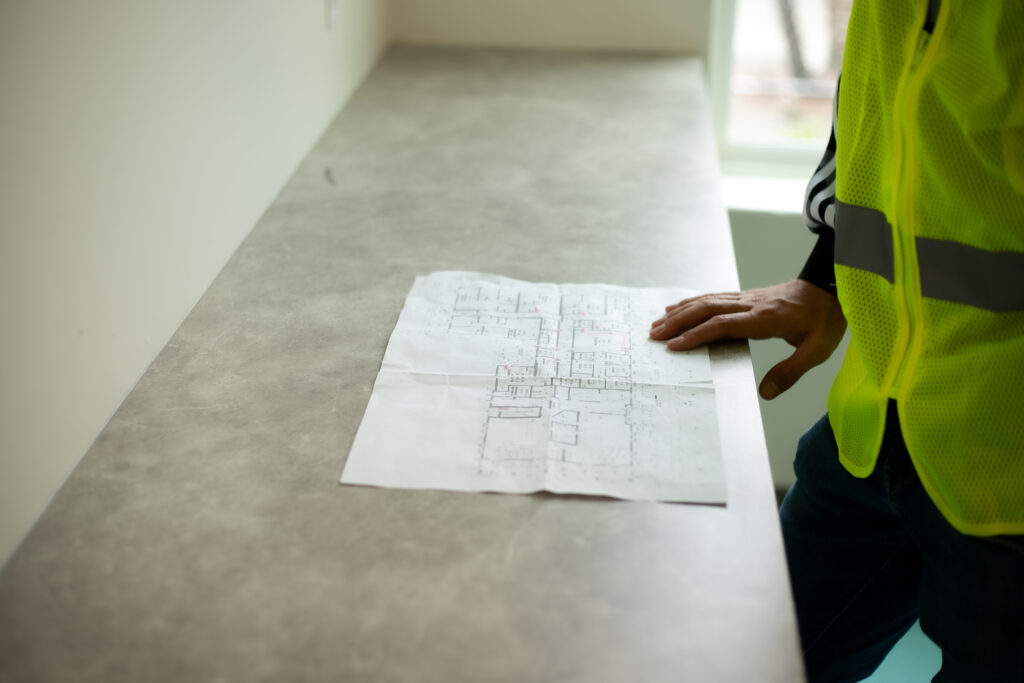Address
Energy Incentives, INC
3517 W. Canal Dr.
Kennewick, WA. 99336
Work Hours
Monday to Friday: 7AM - 7PM
Weekend: Day off

An air barrier test measures a building’s airtightness, which directly impacts energy efficiency. Air leaks can cause up to 30% of energy loss. This guide explains the importance of air barrier tests, the testing methods, and their role in building efficiency.

Air barrier tests are crucial because they address a significant aspect of building energy efficiency. Up to 30% of a building’s energy usage is related to air leakage, which can lead to increased utility bills and decreased comfort. The primary purpose of air barriers is to block air and moisture from entering the building, maintaining its integrity and performance. Improving a structure’s airtightness reduces the load on mechanical systems, leading to more efficient equipment sizing and operation.
Air barrier testing methods, such as:
Each method offers unique advantages in assessing the airtightness of a building. These tests are essential for ensuring that the building’s air barrier system performs as intended, regulating airflow and maintaining overall efficiency.
Implementing air barrier testing goes beyond code compliance; it ensures optimal building performance. Regulated airflow maintains consistent indoor air quality, enhancing occupant health and comfort. Conducting these tests is a proactive measure for sustainable building practices and energy efficiency.

An effective air barrier system requires several key components: continuity, robustness, durability, occasional stiffness, and air permeability. Distinguishing between airtight materials and assemblies ensures effective performance. The system should prevent air leakage to maintain energy efficiency and indoor air quality.
External air barriers typically include mechanically adhered membranes, self-adhered membranes, fluid-applied membranes, exterior sheathing, and exterior insulation. Each of these materials plays a specific role in maintaining the integrity of the building envelope. For instance, mechanically adhered membranes provide a strong bond to the substrate, while self-adhered membranes offer ease of application and flexibility. Fluid-applied membranes create a seamless barrier, and exterior sheathing and insulation add layers of protection against air infiltration.
Building envelope consultants play a vital role in designing and overseeing the installation of air barrier systems. They ensure materials and assemblies meet air permeance criteria and verify correct installation. Engaging these experts helps building owners avoid common pitfalls and ensures long-term system performance.
There are several methods for air barrier testing, each with its unique advantages and applications. Whole building pressurization testing provides a direct measurement of air leakage, which is critical for verifying the performance of air barrier systems. Standards often require knowledge of specific techniques like pressurization and depressurization to conduct effective tests.
The following subsections will delve into three primary methods: blower door testing, infrared thermography, and smoke testing.
The blower door test evaluates a building’s air leakage rates using a specialized fan to create a pressure difference between the interior and exterior. By pressurizing and depressurizing the space, it measures airflow to determine airtightness. This method is effective for both residential and commercial buildings, ensuring energy efficiency compliance.
Test results provide an air leakage rate in cubic feet per minute (CFM) per square foot of envelope area. Identifying potential leaks allows building owners to address issues compromising their air barrier systems. This test is crucial for validating building envelope performance and meeting energy efficiency and indoor air quality standards.
Infrared thermography is another effective method for air barrier testing. This technique uses thermal imaging to detect temperature variations on surfaces, revealing hidden air leaks. By visualizing these temperature differences, infrared thermography can identify pathways where air is infiltrating or exfiltrating the building, providing a clear indication of areas that need attention.
This method is particularly useful for assessing insulation performance around windows, roofs, and other critical areas. By pinpointing areas of heat loss or gain, infrared thermography helps building owners improve energy efficiency and reduce costs. It complements other testing methods by providing a visual representation of air leakage, making it easier to identify and address issues.
Smoke testing is a method that uses visible smoke to identify air leakages in buildings. This technique is effective in locating hidden leaks, as smoke can easily flow through small or hidden openings, providing a clear visual indication of air movement. By observing the flow of smoke, building owners can identify specific points of leakage and take corrective actions.
Smoke testing provides visual confirmation of air leakage points, enhancing air barrier system efficiency. Common uses include retrofitting buildings, energy audits, and troubleshooting existing air barriers. Its simplicity and effectiveness in visualizing air infiltration and exfiltration make it particularly valuable.

Standards and protocols ensure the reliability and effectiveness of air barrier systems. Codes often regulate air barrier requirements by specifying a maximum air permeance rate, maintaining a certain level of airtightness. Compliance with these standards prevents costly future retrofits and ensures intended building performance.
Different areas within a building may require distinct air barrier tests. Choosing a service provider experienced in navigating complex air barrier codes and testing standards is crucial. Certification from recognized organizations signifies adherence to industry standards and a commitment to quality.
The following subsections will detail specific standards and guidelines from ASTM, ABAA, and international bodies.
ASTM standards play a crucial role in defining test methods and requirements for air barrier performance. ASTM E2357 is a test method for determining the air leakage rate of air barrier assemblies under various conditions. ASTM E2178 provides a method for testing the air permeance of some air barrier materials. Additionally, ASTM E1186 outlines practices for identifying air leakage sites in building envelopes and air barrier systems.
Compliance with ASTM standards, along with protocols from entities like the United States Army Corps of Engineers (USACE) and ISO, ensures the reliability of air barrier systems. These standards are essential for maintaining high performance and consistency in air barrier testing, helping building owners achieve optimal airtightness, energy efficiency, and enclosure airtightness compliance testing.
The Air Barrier Association of America (ABAA) outlines best practices for testing air barriers to ensure building enclosure performance. ABAA guidelines emphasize techniques for effective air barrier testing, contributing to energy efficiency and indoor air quality. By adhering to these guidelines, building owners can enhance building performance and reduce operational costs.
The ABAA offers comprehensive resources and training for air barrier testing and installation professionals, ensuring high industry standards and correct installation and testing of air barrier systems. Adhering to ABAA guidelines ensures reliable and effective air barrier performance.
International standards for air barrier testing are crucial for maintaining consistency and reliability across different regions and implementations. These standards are developed according to principles established by the World Trade Organization, ensuring that they promote fair trade and sustainable practices.
Adhering to international standards enhances the effectiveness of building designs and promotes sustainable practices. Organizations like the National Institute of Building Sciences and the United States Army Corps of Engineers (USACE) play a significant role in establishing these standards.
By following international guidelines, building owners can ensure their air barrier systems are effective and compliant with global best practices.

Air barrier tests detect leaks in a building’s exterior, addressing energy inefficiency and degrading indoor air quality. Implementing solutions reduces energy consumption, particularly in urban settings during the heating season. Successful air barrier systems in commercial buildings can reduce air leakage by up to 83%, leading to significant energy cost savings.
High airtightness levels in buildings contribute to improved indoor air quality and reduced risk of moisture-related problems. This is particularly important for maintaining a healthy and comfortable indoor environment. Additionally, the life cycle costs of mechanically fastened air barriers are generally lower compared to fluid-applied solutions, making them more economically viable. Understanding your test results is crucial. For a comprehensive guide on interpreting them, check out Understanding Your Commercial Air Barrier Test Results.
Adopting air barriers increases the operational efficiency of heating systems, leading to further cost savings over time. Air barrier testing validates building envelope performance in controlling air leakage and determines the effectiveness of air infiltration and exfiltration control.

Incorrect installation often causes air barrier failures, compromising the building envelope’s airtightness. Using incompatible materials can also lead to failures, as they may not adhere properly or perform as expected. Discontinuities at junctions, such as walls and roofs, can significantly increase air leakage.
The materials used in an air barrier must be durable to withstand environmental factors and prevent failures. Lack of flexibility in air barrier materials can result in failure as buildings settle and expand over time.
Proper sequencing of trades, quality installation, project-specific testing, and training can prevent air barrier failures. Engaging a provider offering comprehensive consulting during design and construction phases minimizes future air barrier failures.
Successful air barrier testing projects highlight the effectiveness of well-implemented systems in enhancing building efficiency and integrity. For example, the UCLA dormitory project utilized PROSOCO Cat 5, a sprayable air barrier, to seal a 180,000 square-foot dormitory. The collaboration between Southwest Specialty Contractors and PROSOCO demonstrated successful integration of innovative air barrier products.
PROSOCO’s involvement extended beyond product supply, with their representatives offering hands-on assistance throughout the air barrier installation process. This comprehensive support ensured that the project met its airtightness goals, resulting in improved building performance and energy efficiency.
Such case studies underline the importance of choosing the right products and partners to achieve successful air barrier installations.
Choosing the right air barrier testing service provider ensures optimal building airtightness and energy efficiency. Customer reviews and testimonials offer valuable insights into a provider’s reliability and service quality. Providers with positive feedback from previous clients likely deliver effective and reliable testing services.
Certifications from recognized industry standards can also enhance a testing service provider’s credibility. Providers who employ advanced techniques like infrared thermography for accurate identification of air leaks are particularly valuable. These certifications and advanced methods demonstrate a commitment to quality and adherence to industry best practices, ensuring that your building’s air barrier system performs as intended. To avoid common scheduling errors, refer to our article on Avoiding Costly Mistakes When Scheduling Commercial Air Barrier Testing.
In summary, air barrier testing is a vital component of building efficiency and sustainability. By understanding the significance of air barrier tests, the key components of an effective air barrier system, and the various testing methods available, building owners can make informed decisions to enhance their structures’ performance. Adhering to standards and protocols, as well as learning from successful case studies, further emphasizes the importance of thorough and accurate air barrier testing.
As you consider the implementation of air barrier systems and testing in your buildings, remember that choosing the right service provider is key to achieving optimal results. By ensuring that your air barrier system is correctly installed and tested, you can enjoy the benefits of improved energy efficiency, enhanced indoor air quality, and reduced operational costs. Take the first step towards a more efficient and sustainable building today. Property managers can benefit from a thorough understanding of the testing process—learn more in The Ultimate Guide to Commercial Air Barrier Testing.
The primary purpose of an air barrier system is to prevent air and moisture from entering the building, ensuring its integrity and overall performance. This is essential for energy efficiency and occupant comfort.
The blower door test functions by employing a fan to establish a pressure differential between the interior and exterior of a building, which facilitates the evaluation of air leakage through airflow measurement. This process ultimately helps identify areas that may require sealing or improvements to enhance energy efficiency.
Conducting air barrier tests is essential as they identify leaks in a building’s exterior, leading to improved energy efficiency and enhanced indoor air quality. This proactive measure also helps mitigate the risk of moisture-related issues.
Air barrier failures commonly arise from incorrect installation, incompatible materials, and discontinuities at junctions. Ensuring proper installation and material compatibility is crucial for maintaining an effective air barrier.
Selecting a certified air barrier testing service provider is essential for ensuring compliance with industry standards and utilizing advanced techniques for precise leak detection. This commitment to quality directly impacts the building’s overall performance and energy efficiency.

Scheduling commercial air barrier testing for your building in Washington State is crucial for ensuring energy efficiency, indoor air quality, and regulatory compliance. However, making

As a property manager in Washington State, ensuring your commercial building meets all regulatory requirements and operates efficiently is paramount. One critical aspect that can

Unlock the secrets behind your commercial air barrier test results and elevate your building’s performance to new heights. As a property manager in Washington State,

